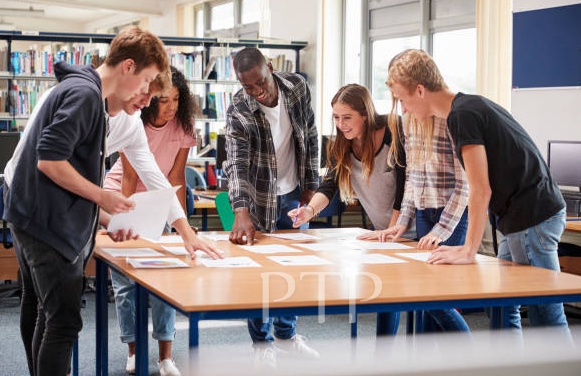How to Accommodate the Visual, the Auditory, and the Kinaesthetic Learners

How to Accommodate the Visual, the Auditory, and the Kinaesthetic Learners.
The Visual or Spatial Learner
A visual or spatial learner is a person who learns best if there are visual aids around to guide the learning process.
Someone with a Visual learning style prefers seen or observed things, including pictures, diagrams, demonstrations, displays, handouts, films, flip charts, etc.
These people will use phrases such as ‘show me’, and ‘let’s look at that’ and will be best able to perform a new task after reading the instructions or watching someone else do it first.
These are the people who will work from lists and written directions and instructions.
For example, someone who can learn best from diagrams, pictures, and graphs would be a visual or spatial learner.
These people tend to be technically oriented and enter engineering fields.
However, the best students are those who are visual or spatial learners.
Why? Because being proficient in programming and IT requires that you be a strong visual or spatial learner.
Almost everything having to do with computers is conceptual and so it relies on graphical or visual representations of components that can’t be seen (e.g. bytes).
How to Accommodate Visual or Spatial Learners
- Use maps, flow charts, or webs to organize materials
- Highlight and colour code books/notes to organize and relate material
- Have students pick out keywords and ideas in their writing and highlight them in different colours to clearly reveal organizational patterns
- Write out checklists of needed formulas, commonly misspelled words, etc.
- Write out and use flashcards for review of material
- Draw pictures or cartoons of concepts
- Write down material on slips of paper and move them around in proper sequence.
- Use the chalkboard (them and you) to note important information
- If using the computer, have the student experiment with different font sizes and styles to enhance readability.
The Linguistic Learner or Auditory Learner
The linguistic learner learns best through linguistic skills including reading, writing, listening, or speaking.
Someone with an Auditory learning style prefers the transfer of information through listening: to the spoken word, of self or others, of sounds and noises.
These people will use phrases such as ‘tell me’, and ‘let’s talk it over’ and will be best able to perform a new task after listening to instructions from an expert.
These are the people who are happy being given spoken instructions over the telephone and can remember all the words to songs that they hear
Sometimes, it’s a combination of these methods.
So, for example, if a linguistic learner wanted to tackle a new skill, their best method of learning would be to read about it, then listen to an audio recording and take notes on it.
Finally, concretizing it would require speaking about it and, possibly, writing about it extensively.
How to Accommodate Linguistic Learners or Auditory Learners
- Engage the student in conversation about the subject matter
- Question students about the material
- Ask for oral summaries of material
- Have them tape lectures and review them with you
- Have them tape themselves reviewing material and listen to it together
- Read material aloud to them
- Use a talking calculator
- Have them put the material to a rhythm or tune and rehearse it aloud
The Kinaesthetic Learner
The Kinaesthetic learner is a person who learns best by actually doing something.
Someone with a Kinaesthetic learning style has a preference for physical experience touching, feeling, holding, doing, and practical hands-on experiences.
These people will use phrases such as ‘let me try’, and ‘how do you feel?’ and will be best able to perform a new task by going ahead and trying it out, learning as they go.
These are the people who like to experiment, hands-on, and never look at the instructions first!
These people are also scientific and must interact with objects to learn about them (or learn about them in the best way possible).
How to Accommodation Kinaesthetic Learners
- Write out checklists of materials to be learned or looked for
- Trace words and diagrams on paper
- Use textured paper and experiment with different sizes of pens, pencils, and crayons to write down information
- Use role-play or dramatize concepts. Students can move objects around to dramatize a concept or act out the concept themselves.
- Ask the student to envision a scene in which the material to be learned is being used or acted out somehow. For example, a student could imagine being a character in a novel.
- Have the student take notes (on paper, word processor, in textbooks) while reading or listening.
- Use some form of body movement (snapping fingers, pacing, mouthing ideas) while reciting material to be learned






